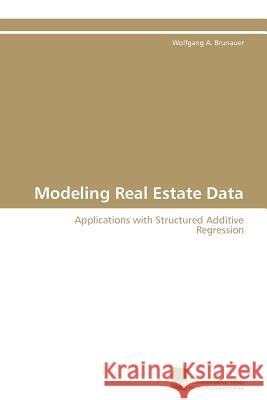Modeling Real Estate Data » książka
Modeling Real Estate Data
ISBN-13: 9783838126975 / Niemiecki / Miękka / 2011 / 124 str.
The statistical analysis of real estate data has received increasingly more attention during the last decade. Property owners, investors and banks are looking for cost-effective and reliable means to assess the value of single properties or even property portfolios. Additionally, building operating charges have turned out to be a major determinant of profitability of real estate investment, and the Europe-wide introduction of the energy certification for buildings in 2002 enhances the importance of accurate assessment of the energy efficiency of buildings even more. The main purpose of this thesis is to apply approaches that address nonlinearity and spatial or cluster-specific heterogeneity simultaneously on real estate price and cost data. A particularly broad and rich framework for semiparametric modeling is provided by structured additive regression (STAR) models. In STAR-models, continuous covariates are modeled as P(enalized)-splines. Furthermore, possibly correlated discrete random effects for spatial indexes, functions of two dimensional surfaces and (spatially) varying coefficient terms may also be estimated using this methodology.
The statistical analysis of real estate data has received increasingly more attention during the last decade. Property owners, investors and banks are looking for cost-effective and reliable means to assess the value of single properties or even property portfolios. Additionally, building operating charges have turned out to be a major determinant of profitability of real estate investment, and the Europe-wide introduction of the energy certification for buildings in 2002 enhances the importance of accurate assessment of the energy efficiency of buildings even more. The main purpose of this thesis is to apply approaches that address nonlinearity and spatial or cluster-specific heterogeneity simultaneously on real estate price and cost data. A particularly broad and rich framework for semiparametric modeling is provided by structured additive regression (STAR) models. In STAR-models, continuous covariates are modeled as P(enalized)-splines. Furthermore, possibly correlated discrete random effects for spatial indexes, functions of two dimensional surfaces and (spatially) varying coefficient terms may also be estimated using this methodology.











